Estée Lauder Companies Elevates Eco-Elegance
New standards of luxury packaging show innovation, collaboration, boldness, and inspiration.
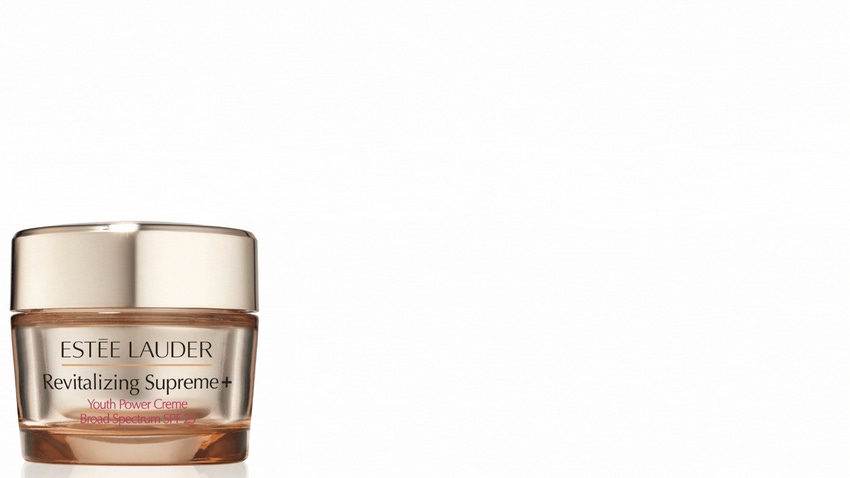
At a Glance
- With its ambitious standards, Estée Lauder leads the high-end beauty industry for packaging sustainability.
- Refillable and reusable packaging is a one of the company’s strategies.
- Collaboration helps ELC overcome challenges of integrating sustainability while maintaining high-end appeal.
The Estée Lauder Companies (ELC) has been walking the sustainability path for decades now. For some of its brands and products — Estée Lauder, for example — that’s an uphill journey because consumers still have certain expectations for the look and feel of a high-end buy.
The misperception of needing more packaging to show consumers value is something I debunked in the chapter I wrote for the 2019 book envisioned by Tom Szaky, Founder/CEO of TerraCycle and Loop: The Future of Packaging: From Linear to Circular. But here we are, five years later, still struggling to make headway, especially for luxury products.
But look how far The Estée Lauder Companies has come.
In this exclusive Earth Day 2024 interview, Rob Peterson, Senior Vice President, Global R&D and Supply Chain, Global Packaging and Engineering, The Estée Lauder Companies, explains how ELC balances new standards of luxury packaging with sustainability considerations in alignment with the company’s financial goals.
What are customer expectations today for luxury brands? How have those expectations changed over the years and why?
Peterson: The packaging of a product is one of the first aspects a consumer encounters, making it incredibly important to the end-to-end consumer experience. This is particularly important in the luxury industry and prestige beauty space. The packaging needs to look and feel luxurious and hold up to our high-quality standards. The iconic packaging associated with our brands helps us deliver a high-touch luxury experience.
To meet our consumers’ expectations, we select materials that meet performance requirements, deliver on our luxury offerings, and help us achieve our sustainability goals. We invest in packaging innovation to advance solutions not only for our brands, but also for the personal care and cosmetics industry at large. We have an opportunity to take our packaging innovation to an even greater level by implementing packaging sustainability principles that allow us to create elegant solutions for our consumers while keeping the environment in mind. Though challenging at times, our commitment is to develop packaging without trade-offs and maintain or elevate the luxury feel consumers know and love while integrating packaging sustainability principles.
We’re always identifying ways to better listen to and engage our consumers. We do hear about the sustainability of our packaging materials from them, so we look to highlight relevant details on our product websites, packaging, and advertising. We’re also looking to introduce new alternative materials and designs to continue to improve the sustainability of our packaging. An example of this is Estée Lauder’s Advanced Night Repair Serum, redesigned and reimagined in a recyclable glass bottle.
What are the challenges you face in balancing these expectations with the need to better align the packaging with your sustainability goals?
Peterson: We strive to define our ambitious goals in a realistic and transparent way. That means we need to understand our challenges and develop partnerships and collaborations with sustainability organizations, recyclers, and suppliers.
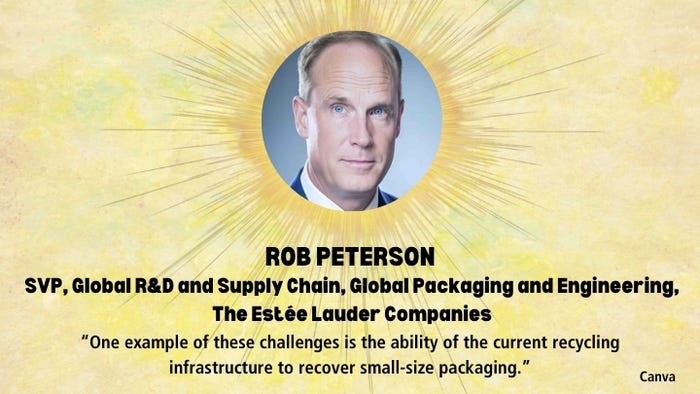
We’re also continuously developing our knowledge about our packaging materials. We wanted to ensure our stakeholders knew we were looking to evolve our sustainability journey while being objective about challenges we face due to the nature of our products. One example of these challenges is the ability of the current recycling infrastructure to recover small-size packaging.
Importantly, packaging must protect the products inside, which means it must be sturdy and durable. Our focus on packaging materials aligns with performance requirements and delivering on the company’s luxury offerings. The solutions we might choose will depend on whether a material might be available or compatible with the formula and its application, as well as its compliance with our quality and certification standards.
Challenges can be faced when trying to meet all these variables at the same time, particularly when certain applications like products that are certified as “over the counter,” which might require the use of food-grade materials, potentially limiting the sources of recycled content available.
How are you solving those challenges?
Peterson: While our aspiration is to transform our packages to be designed with our 5Rs in mind — recyclable, refillable, reusable, recycled, or recoverable — we understand that change of this scale might take time, and a lot of changes in the value chain. This is why we invest in innovative packaging sustainability solutions not only to achieve our goals, but also to propel the industry forward.
“Our approach to solving these challenges is multifaceted, and includes process improvements, supplier collaborations, research involving alternative materials, and identification of ways to better listen to and engage our consumers.”
Our approach to solving these challenges is multifaceted, and includes process improvements, supplier collaborations, research involving alternative materials, and identification of ways to better listen to and engage our consumers. While we have already achieved milestones in transforming our business, we acknowledge that there is still much work to be done for us and for the industry.
You say you “aim to set new standards for sustainability in the beauty industry.” What are those new standards? Why should those be the new standards?
Peterson: At ELC, we believe packaging enables new and unique value propositions that can help advance sustainability solutions for our brands and for the personal care and cosmetics industries at large.
“… our consumers expect companies like ours to join the broader global fight against plastic waste.”
Additionally, we recognize that our consumers expect companies like ours to join the broader global fight against plastic waste. A timely example of our dedication to collaborate for industry impact is our joining of the Business Coalition for a Global Plastics Treaty, convened by the Ellen MacArthur Foundation and WWF, to support the drafting of the UN Plastics Treaty.
We are also members of 4evergreen, supporting our commitment to innovate with materials like paper for other applications. 4evergreen is an alliance of more than 100 manufacturers, designers, brand owners, researchers, and recyclers who want to contribute to a climate-neutral society by perfecting the circularity and sustainability of fiber-based packaging.
In 2020, ELC stated its Packaging Sustainability Guidelines. Why call them Guidelines?
Peterson: Our approach to packaging sustainability comes to life through our Packaging Sustainability Guidelines, which help drive our priorities internally. While Guidelines and mandatory requirements each play important roles in sustainability implementation across our business, guidelines offer a more flexible, collaborative, and often more effective way to achieve high standards and encourage continuous improvement.
In addition to helping each brand make informed decisions that allow for both standardization and flexibility, they ensure that they’re equipped with detailed information on how to go about a particular packaging’s development in alignment with our goals. Our guidelines also help us train employees, inform external and internal resources, and keep track of our data by providing clear definitions that we can measure and report.
Our corporate teams work closely with our brands to determine what makes the most sense for their consumer demographic and business realities. Because of this, how we achieve these goals may look different to each brand. For instance, some brands may want to focus solely on refillable/reusable while other brands may want to focus on recycled materials depending on their positioning.
Can you give us an example of how you’ve recently implemented each of your five guidelines for your luxury products?
1. Reducing and removing packaging where possible:
In fiscal 2022, Clinique used 100% recycled chipboard for gift-set packaging, eliminating approximately 60,000 pounds of plastic. Origins’ holiday packaging also removed plastic components, eliminating approximately 29,800 pounds of plastic.
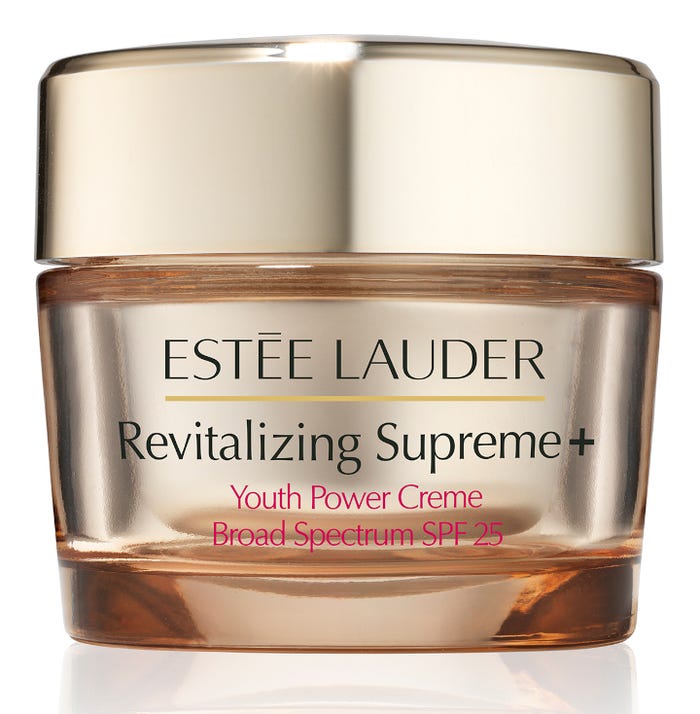
THE ESTÉE LAUDER COMPANIES
2. Designing packaging that is reusable and refillable:
In fiscal 2023, Estée Lauder transitioned the jars for its Revitalizing Supreme+ Moisturizer to a recyclable glass jar with a refillable option. According to the projected results of life cycle assessment conducted, purchasing the Revitalizing Supreme+ refillable and recyclable glass jar and one refill can help reduce 40% of associated emissions and water consumption — after having first purchased a Revitalizing Supreme+ refillable and recyclable glass jar. Additionally, the refillable pod offering will help to minimize packaging weight by 90%.
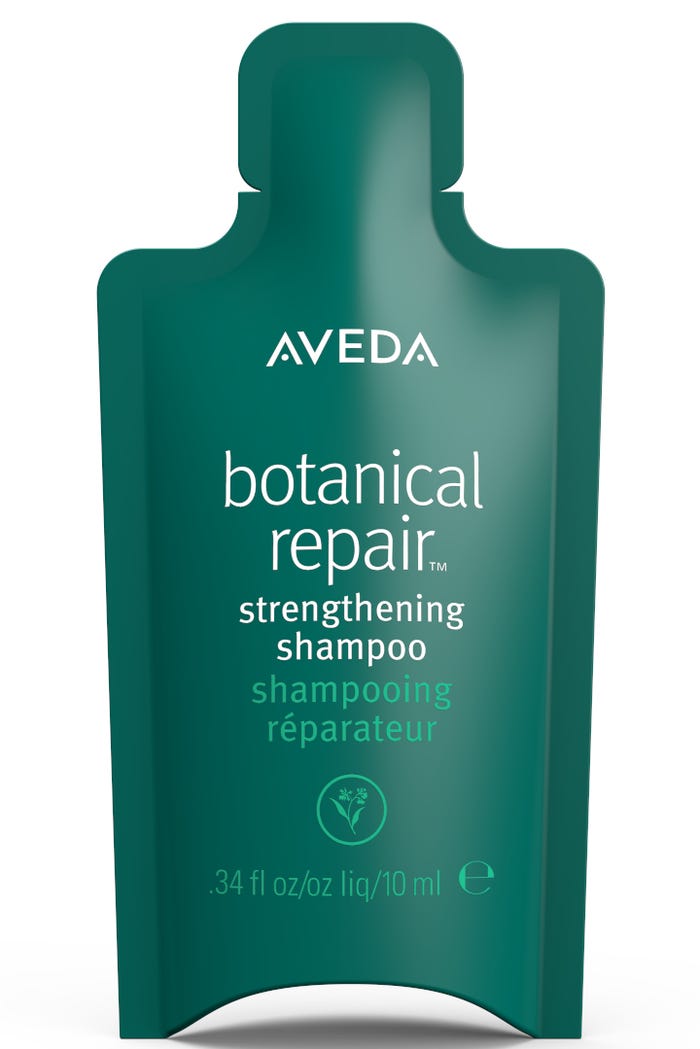
THE ESTÉE LAUDER COMPANIES
3. Building designed-in recyclability:
Our Aveda brand’s pioneering approach to responsible packaging leads the industry forward with the development of paper-based, locally recyclable sachets for product samples. Compared to their plastic predecessors, production of this paper-based sachet reduces water consumption by at least 36% and emits 37% fewer greenhouse gases, showcasing ELC’s dedication to meeting consumer needs through innovations.
4. Increasing amounts of Post-Consumer Recycled (PCR) material in packaging:
Our work with suppliers has helped us incorporate PCR content in our packages. Examples include packaging for products such as Bumble and Bumble’s seaweed shampoo and Bobbi Brown’s Extra Plump Lip Serum.
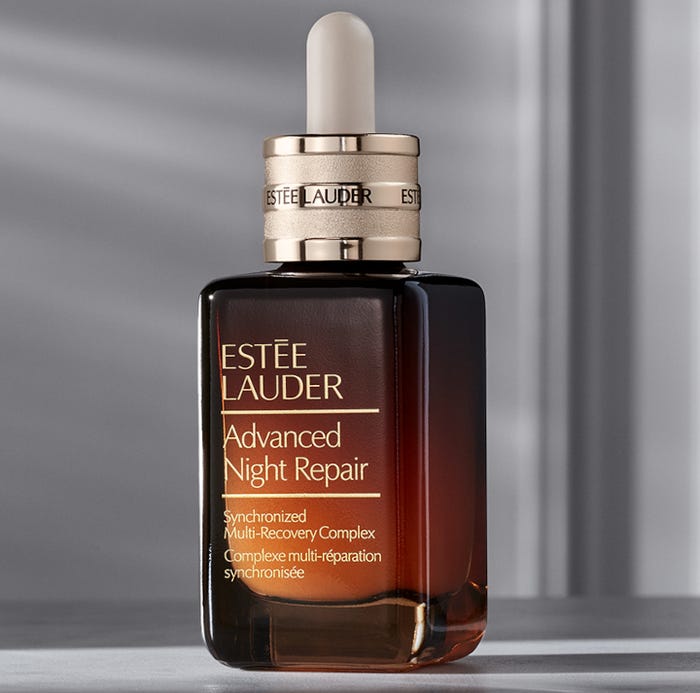
THE ESTÉE LAUDER COMPANIES
Aligned to our objective to reduce plastic use, in 2021, our Estée Lauder brand launched the Advanced Night Repair Serum Synchronized Multi-Recovery Complex with the iconic bottle reimagined, housed in a new, expertly crafted, recyclable glass bottle. Switching the Advanced Night Repair Serum bottles, sold globally, from plastic to glass avoids millions of plastic bottles per year.
5. Replacing petroleum-based plastics with bioplastics (if the bioplastic can be recycled and does not contaminate the traditional recycling streams):
Clinique’s All About Clean Liquid Facial Soap comes in a recyclable bottle that is 96% plant-derived plastic and its cap is 25% post-consumer recycled material.
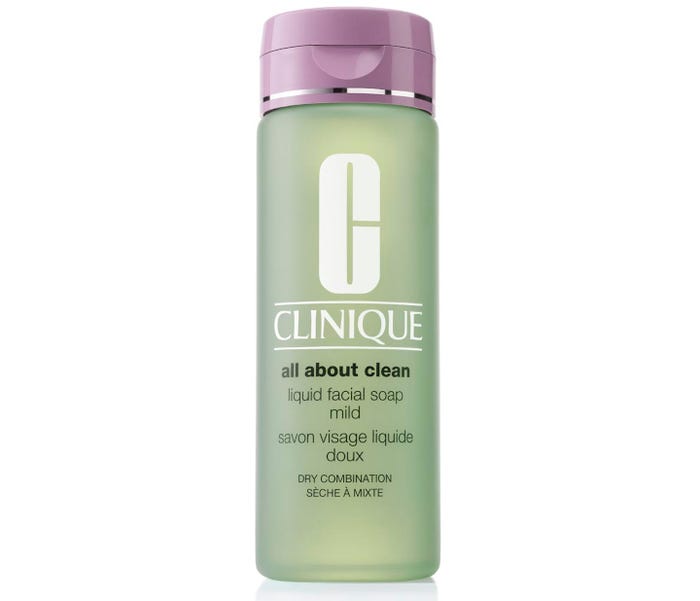
THE ESTÉE LAUDER COMPANIES
Advanced recycling is getting a lot of attention, especially for companies that use a lot of plastic or mixed-material packaging. The company has touted its advanced recycling collaboration with Eastman for being able to add post-consumer recycled content to its packages. Does ELC see advanced recycling as an end-of-life solution that allows them free (or freer) reign during packaging development? Why or why not?
Peterson: This is an exciting new frontier in material science and sustainability, and we hope that advanced recycling can help us make great progress towards our goals to reduce plastic waste.
Our team identifies and implements materials with sustainability, luxury, functionality, compatibility, and quality in mind. We leverage a range of packaging solutions depending on the product packages we are developing, including the use of advanced recycling (or molecular recycling technologies) and innovative uses of materials such as paper.
We incorporate advanced recycled materials from diverse suppliers, including Eastman, through our portfolio of brands as a complementary solution to mechanical recycling. Advanced recycling is another tool we hope to use to advance circularity by enabling the use of more PCR content in our packaging.
You say it’s been a collective effort to get 71% of your packaging, by weight, recyclable, refillable, reusable, recycled, or recoverable as of end of fiscal year 2023. Internally and externally, who has participated in this effort and what have they done?
Peterson: It is crucial to understand the challenges we face in the industry, and to create partnerships and collaborations with sustainability organizations, recyclers, and suppliers that expand our knowledge about our packaging materials and formats.
Real change requires collaboration, which is why we actively participate in industry-wide initiatives and are members of global associations such as the Sustainable Packaging Initiative for Cosmetics (SPICE) and The Ellen MacArthur Foundation. We’re committed to driving sustainable change not only within our organization but also across our broader value chain.
Internally, as a brand-led company, our Packaging teams work closely with our brands to deliver on the expectations of our consumers and other stakeholders. Our brands and their Product Development, Marketing, and Consumer Engagement teams are the ones that have that close relationship with consumers, and our Packaging teams learn a lot from them about what our consumers want to see in terms of sustainability.
ELC is fortunate to have in-house R&D labs and experienced packaging development teams. Not all companies that sell luxury products do though. What’s one piece of advice you would give companies faced with the same challenges but not as lucky to have the same resources?
Peterson: At ELC, we recognize the importance of deploying holistic, collaborative approaches to build scalable solutions. Suppliers are critical in helping any company — no matter how large or small — move the needle in sustainability, and we’d encourage smaller companies who may not have the same resources to seek out those supplier partnerships and collaborations.
Reusable/refillable packaging is usually seen by consumers as a cost-savings tactic. It’s certainly been reframed recently for its environmental benefits. But how are you redefining this packaging concept for high-end brands?
Peterson: Our refillable and reusable packaging is one of our strategies. Our consumers can help to reduce environmental impact through their purchasing decisions, including by buying products in refillable containers.
As of the end of fiscal 2023, nine brands continued to offer refillable containers for select products, with many expanding the number of products available in refillable containers. For example, Bobbi Brown’s new Extra Repair Moisturize Cream Intense features luxe packaging designed to be refilled.
What sustainable packaging materials are you looking at for possible future use and why those? How will they communicate elegance to your consumers?
Peterson: Our material scientists and packaging engineers are consistently exploring new sustainable packaging materials. We are also always collaborating with our suppliers to understand their new innovations. Examples of this includes exploring innovative uses of broadly used materials such as paper, as well as materials that are “3rd generation feedstocks” in that they’re produced from materials that would otherwise be wasted.
About the Author(s)
You May Also Like




